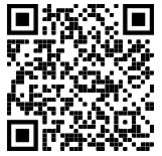*** Jump to English version ***
Gebundene Rotation
Betrachtet man den Mond, so fällt auf, dass er der Erde stets die gleiche Seite zuwendet. Dieses Phänomen heißt auch gebundene Rotation. Dabei benötigt der Mond genauso lange für eine Drehung um sich selbst wie für eine Drehung um die Erde. Doch gebundene Rotation tritt nicht nur beim System Mond-Erde, sondern auch bei extrasolaren Systemen auf.
Betrachtet man z.B. Rote Zwerge, die im Vergleich zur Sonne kälter sind und einen Großteil der Sterne in Spiral- und elliptischen Galaxien ausmachen, so müssen mögliche habitable Exoplaneten näher am Stern liegen, was die Wahrscheinlichkeit einer gebundenen Rotation erhöht.
Insbesondere die jüngste Entdeckung von TRAPPIST-1e und Proxima Centauri b (wahrscheinlich terrestrische Planeten in der habitablen Zone), die nur 40 Lichtjahre von der Erde entfernt liegen und welche wahrscheinlich auch gebunden um ihren Stern rotieren, motiviert die Erforschung der Frage, welche Auswirkungen gebundene Rotation auf die Bewohnbarkeit der Exoplaneten haben könnte.
Versuchsaufbau und -Durchführung
- Jahrgangsstufe: 7-10
- Unterrichtsfach: Physik, Naturwissenschaften
- Methode: Schülerexperiment
- Dauer: variabel.
- DIY: möglich.
- Verfügbar für: Smartphone // nur mit externem Sensor (Alternative nur mit Android-Smartphone)
Motivation
- Einstieg über die oben genannten Fakten zu Exoplaneten.
- Gebundene Rotation des Mondes
- App „ExoplanetenExplorer“ (im Google Play Store verfügbar)
Einkaufsliste / benötigte Materialien
- Kugel mit Befestigung
- Ein oder zwei externe Sensoren mit Lichtsensor und Smartphone // alternativ auch mit Android-Smartphone
- Kugelleuchte
- Klebeband
Die genannten Materialien sind exemplarisch und stellen nur eine Auswahl möglicher Gegenstände dar.
Versuchsaufbau und Durchführung
Version mit einem externen Sensor: Die Kugelleuchte wird in die Mitte eines Tischs gestellt. Der Sensor wird mit Klebeband an der Kugel befestigt. Über den QR-Code wird das entsprechende Modul bei phyphox geöffnet. Die Kugel wird nun zunächst so um die Lampe bewegt, dass der Sensor immer in Richtung der Lampe zeigt. Dies bezeichnet man als Gebundene Rotation. In einem zweiten Experiment wird die Kugel so schnell gedreht, dass sie mehrfach bei ihrer Umrundung um die Lampe von der Lampe weg zeigt.
Version mit zwei externen Sensoren: Die Kugelleuchte wird in die Mitte eines Tischs gestellt. Die Sensoren werden mit Klebeband an der Kugel gegenüber an der Kugel befestigt. Über den QR-Code wird das entsprechende Modul bei phyphox geöffnet. Die Kugel wird nun zunächst so um die Lampe bewegt, dass der Sensor ein Sensor immer in Richtung der Lampe zeigt. Dies bezeichnet man als Gebundene Rotation. In einem zweiten Experiment wird die Kugel so schnell gedreht, dass jeder Sensor mehrfach bei der Umrundung um die Lampe von der Lampe weg zeigt.
Video der Durchführung:
Alternative(n)
Das Experiment kann in einfacher Form mit einem Android-Smartphone ohne Sensor durchgeführt werden. Hierzu wird das Smartphone so um die Lampe geführt, dass immer die gleiche Seite des Smartphones zur Lampe hinzeigt. Dies bezeichnet man als Gebundene Rotation.
phyphox Experiment


SensorTag: astro-lab.app/phyphox/tidal-locking.phyphox
2x SensorTag: astro-lab.app/phyphox/tidal-locking_complete.phyphox
Tidal locking
If you look at the moon, you will notice that it always turns the same side towards the earth. This phenomenon is also called tidal locking. The moon needs the same time for a rotation around itself as for a rotation around the earth. But bound rotation does not only occur at the system Moon-Earth, but also at extrasolar systems.
For example, if we consider red dwarfs, which are colder compared to the Sun and make up a large fraction of stars in spiral and elliptical galaxies, possible habitable exoplanets must be closer to the star, increasing the probability of bound rotation.
In particular, the recent discovery of TRAPPIST-1e and Proxima Centauri b (likely terrestrial planets in the habitable zone), which are only 40 light-years from Earth and which are also likely to have bound rotation around their star, motivates exploration of what effect tidal locking might have on exoplanet habitability.
Overview
- Grades: 7-10
- Subject: Physics, natural sciences
- Method: Student experiment
- Duration: variable.
- DIY: possible.
- Available for: Smartphone // only with external sensor (alternative only with smartphone)
Motivation
- Introduction to the above facts about exoplanets.
- Bounded rotation of the moon
- App „ExoplanetenExplorer“ (Available in the Google Play Store)
Shopping list / materials needed
- Sphere with mounting
- One or two external sensors with light sensor and smartphone // alternatively also with Android smartphone
- Ball light
- tape
The materials mentioned are exemplary and represent only a selection of possible items.
Experimental set-up and procedure
Version with one external sensor: The light is placed in the middle of a table. The sensor is attached to the sphere with adhesive tape. The corresponding module at phyphox is opened via the QR code. The sphere is now first moved around the lamp so that the sensor always points in the direction of the lamp. This is called tidal locking. In a second experiment, the sphere is rotated so fast that it points away from the lamp several times as it goes around the lamp.
Version with two external sensors: The lamp is placed in the middle of a table. The sensors are attached to the sphere with adhesive tape opposite each other. The corresponding module at phyphox is opened via the QR code. The sphere is now first moved around the lamp so that the sensor one sensor always points in the direction of the lamp. This is called tidal locking. In a second experiment, the sphere is rotated so quickly that each sensor points away from the lamp several times white it circulates around the lamp once.
Video of the experimental procedure
Alternative(s)
The experiment can be carried out in a simple form with an Android smartphone without a sensor. To do this, the smartphone is guided around the lamp in such a way that the same side of the smartphone always faces the lamp. This is called a tidal locking.
phyphox Experiment


SensorTag: astro-lab.app/phyphox/tidal-locking.phyphox
2x SensorTag: astro-lab.app/phyphox/tidal-locking_complete.phyphox